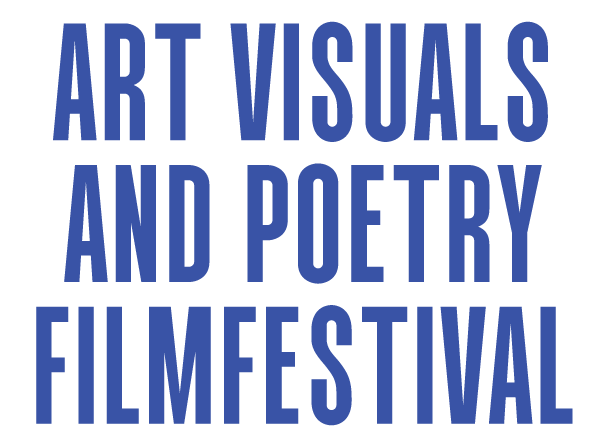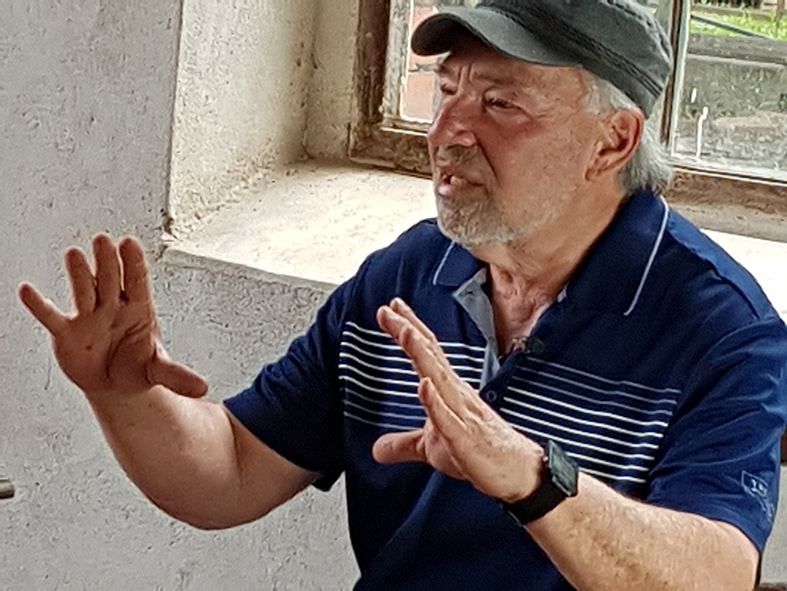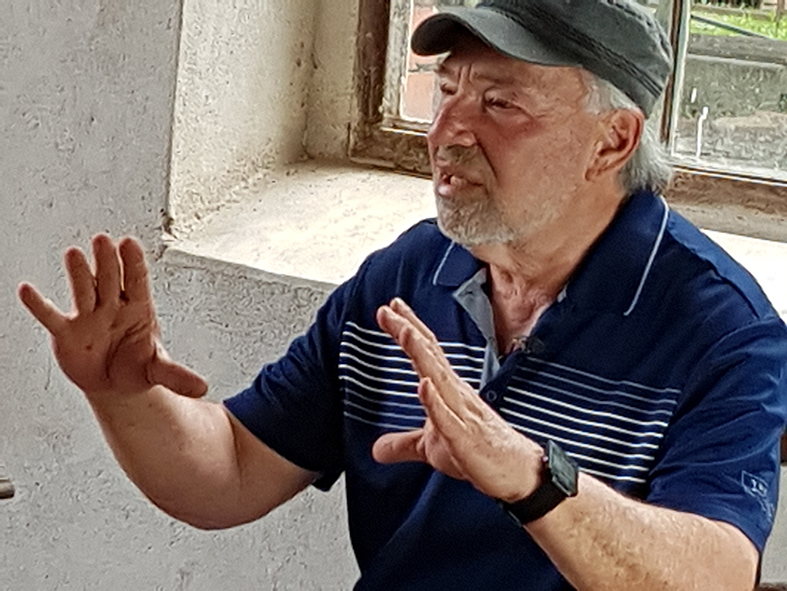Tom Konyves, University of the Fraser Valley, BC, CANADA
What is a poetry film? [videopoem]
Historically, a poetry film has not changed very much. The filmmaker decides to use an existing poem as a source as well as the “script” for a short narrative film. It is usually a visualized form of the poem, illustrating the text with images whose correspondence to the text is a direct representation of the text in moving images, in motion pictures.
In its earliest form, the poetry film used the poem’s original text, sometimes edited by the filmmaker for the brevity of the work, but always in the form of intertitles. The first works in this form, at the turn of the century, were produced by D.W. Griffith, who based his films on poems by Browning and Tennyson. Ten years later, Sheeler and Strand’s film “Manhatta” used superimposed text, drawn from Walt Whitman’s poem, City of Ships, to achieve the same effect. By the mid 1920’s, especially due to the influence of surrealism, avant-garde filmmakers – the French purists – began to recognize the artistic potential of the medium, its artistic vs entertainment potential and, moving away from the text, in effect distancing their work from literature, believed (for lack of better a term) they were producing the "poetry of film".
The surrealists demanded an anti-narrative approach to artistic expression, which produced a type of filmmaking that focused on the intrinsic qualities of the medium – specifically motion, perspective, lighting and rhythm – with the objective of a formal reaction, if not outright opposition, to the narrative paradigm found in commercial filmmaking. The text of poetry, the words of existing poems (for the most part) began to disappear. Experimentation in film, produced by the avant-garde film makers, focused on the materiality of film as well as the myriad possibilities in the "abstraction" of images, following the current of material manipulation in the other visual arts, specifically painting and sculpture.
It is important to note that, to describe the aesthetic validity of their efforts, these workers in the medium of film often used the lexicon of poetry to define their new art form. The dialectic conversation between literature and visual art began to turn away from the centuries-old domination of literature to the rapid rise of image-making that found its advantage through the technological successes of first, photography, then its successor and champion, the cinema. By the mid-20th century, these new image-making techniques were advancing in both narrative and non-narrative directions. With a flash of light, the age of the image had arrived.
I hope it's becoming clear that it was filmmakers, not poets, who held the reins of the advance in poetry films.
Interestingly, the poets were "on the same track", having received their marching orders toward visual expression from Stéphane Mallarmé, then Guillaume Apollinaire, the Dadas and the Futurists, then the Concrete Poets of the 1950s, followed by the Lettrists, all pushing for a new visual form for poetry. But the most significant step, that of relinquishing the page in favour of the screen, was not an identifiable option; poets were satisfied to quietly provide their works for filmmakers who then used these poems as elements in their fictions and documentaries. It was only when the poets were to become themselves filmmakers, i.e. true hybrid, multidisciplinary artists, assisted by the new accessible technology of video (sometimes by the collaborative support of filmmakers) that the new poet-driven genre of videopoetry began to assume the form or the glimpse of that form that we are, from time to time, here and there, witnessing today.
Where does the interest in audio-visualizing written poems come from?
Dick Higgins, in his introduction to the 1987 book Pattern Poetry, describes the visualizing of poetry, poetry for the page, in terms that can also be assigned to poetry films – he describes the development of the form as “the story of an ongoing human wish to combine the visual and literary impulses, to tie together the experience of these two areas into an aesthetic whole.”
Visualizing poems had its most influential exemplar in Stéphane Mallarmé, who dispersed words on a page and also theorized about the space around the words as adding to the meaning of the poem. At the turn of the century, Apollinaire created patterned poems he called calligrams, whose positioning suggested a representation of the central theme of the poem. For example, his poem, Il Pleut, (It’s Raining), displayed five vertical lines of words falling, as rain. Visualizing words in this way led to “concrete” poetry, where the compression of language into its most basic expression (as abstract terms, for example, space and silence) became visual and forced the reader to look at, see, as well as understand the meaning of a work. Concrete poems eventually found their counterpart in film, specifically video, with the work of e.m.de melo e castro, who produced the first kinetic text example of a videopoem in 1968.
Where do you locate its history? Who were the pioneers? Who and where are they now?
From my perspective, Duchamp's "Anemic Cinema" began the evolution of artist-controlled text in motion on a screen, demonstrating for the first time that alternative methods for the treatment of displayed text could produce a reading experience for the viewer that was radically different from viewer-controlled reading. Displayed-text experiments in real-time writing and erasure of writing were continued by myself in the late 70s; then, Canadian filmmaker Michael Snow produced "So Is This", a film composed entirely of words displayed on the screen one word at a time, but of varying durations. Richard Kostelanetz experimented with words in motion in every direction across the screen. Today, Young-Hae Chang Heavy Industries utilize rapid fire kinetic text with an equally charged high energy soundtrack.
I use the term Kinetic Text to differentiate between five distinct forms or categories that I proposed in my essay, Videopoetry: A Manifesto, published on the Internet on September 6, 2011. These 5 categories are differentiated in their use of text, voiced or displayed, that I consider the essential element of every videopoem.
Aesthetic and Creative Dimensions: What’s makes a good poetry film [videopoem]?
A couple of years ago, I was asked a similar question in the online forum of movingpoems.com. It was, "Do you worry about more serious work being drowned in a sea of mediocrity?" My response was, "Mediocrity in videopoetry is that which does not advance the genre." You can see where my interests lie.
|
1. A good videopoem does not illustrate its text with a corresponding element of image or sound (for example, the word rose being juxtaposed with an image of a rose, or the image of a rose being juxtaposed with the spoken word rose) |
|
2. A good videopoem produces a poetic experience in the viewer that is the result of a considered, judicious, balanced blend of text, image and sound. The text in a videopoem need not be a poem at all, or even poetic; it is the manner in which the text is blended with the image or the images, the sounds or the soundtrack that produces a poetic experience. The best poem written for the page may not work with images or a soundtrack. |
|
|
|
Where do these different terms come from: videopoem, video poetry, Lyrikclip, Filmlyrik, poetry film, Cin(E-) Poetry, Moving Poems; …? What sets them apart?
With the odd exception (I include myself as one of the odd)... With the odd exception, it is no secret that it matters little to the world whether a work is named a poetry film, a film poem, a video poem or a poetry video.
.
Although I can appreciate the role of (what I call) poetry films to disseminate popular poems to a wide audience, my own practice and long attachment to the word videopoetry has necessitated tmy strong support for the word videopoetry.
It matters to me that videopoetry be one word; that it be not hyphenated or separated, because, as one word, it indicates that a fusion of the visual and the verbal has occurred, resulting in a new, different form of expressing a poetic experience.
It matters to me that the second term of this compound noun be poetry, not film or video - for it is the second term that represents the genre, the first term being the material base or modifying term. The genre is poetry, the material base is video (or film).[2]
In his 1980 book Semiotics of Poetry, Michael Riffaterre makes a strong case for videopoetry: For Riffaterre, the uniqueness of a poetic experience - as opposed to a cinematic experience - is manifested by the presence of ungrammaticalities. According to Riffaterre, poetry expresses concepts and things by indirection. Unlike film or video, a poem says one thing and means another. Roland Barthes referred to this as an oblique space.
A clarification about my proposed fifth category of videopoetry, i.e. Cin(e)poetry. It is a term I borrowed from San Francisco-based computer artist and poet, George Aguilar who coined cin(e)poetry in the early 2000s. The parenthesized (e) signifies that the work was created or modified using a graphics program in a computer. Aguilar is considered a pioneer in ma-chinima – which is itself a combination of machine and cinema - in the online 3-D virtual world called Second Life. His term was perfect for my 5th category, wherein the text is animated and/or superimposed over graphics, still or moving images that are “painted” or modified with the assistance of computer software, e.g., Photoshop, Flash or the 3D modelling and anime features, as in Second Life, the online virtual world. It closely resembles another category, Visual Text, except the imagery of cin(e)poetry has a computer-generated or modified appearance.
Conclusion
It is widely accepted that our century is the age of the Image. Its sheer power to represent and modify our view of the world is almost beyond comprehension. Add to this the supreme, persistent and heretofore dominant imstrument of communication and individual expression, our language, our text, displayed or voiced. Then add to these the technological advancements in the manipulation of sound, human, machine, electronic. You would think, you must think, that integrating these three forms of creative expression will produce a new uber-art form. Could it be that the works we are witnessing - on the screens at our festivals, on the screens of our Internet - could it be that the precious balance of these potent elements in the cauldron has yet to be found?
[1] Much is made of the phrase, "A picture is worth a thousand words. " It could be the banner waving W.J.T. Mitchell’s "pictorial turn" in the 20th century or just another unwanted ad. It’s also a gauntlet thrown to the poets by the image-makers. I happen to be fond of words. Sometimes a thousand may be too many or – not enough. One thing’s for sure, a single word can change our ideas, thoughts, feelings. Think "she loves me, she loves me not". After clicking "Send" to the document above, I noticed a typo. I had sent a document that included the statement, "The role of chance in this process should be underestimated or absent. " As in Jose Saramago’s "The History of the Siege of Lisbon", the word not had just made a thousand pictures in our minds disappear. Snap.
[2] It is interesting that, to the German organizers, the genre is termed as Poesiefilm. emphasizing that it is the medium of film that is modified by poetry, not the other way around.
Tom Konyves
Faculty-Instructor Literature and Visual Arts University of the Fraser Valley. Born in Budapest, based in Montreal until 1983, his work is distinguished by Dadaist/Surrealist/experimental writings, performance works and videopoems. He has published 6 books of poetry. In 1978, he coined the term 'videopoetry' to describe his multimedia work, and is considered to be one of the original pioneers of the form. He is the author of "Videopoetry: A Manifesto", published on Sept. 6, 2011. As one of the leading theorists of the genre of videopoetry - his Manifesto was reposted on numerous blogs, including W.J.T. Mitchell's Critical Inquiry, and to date has been accessed on issuu.com by more than 20,000 readers in 66 countries - he has been invited to address festivals, conferences and symposia in Buenos Aires, Berlin, New York, London, Amsterdam, Montpellier, among others.


